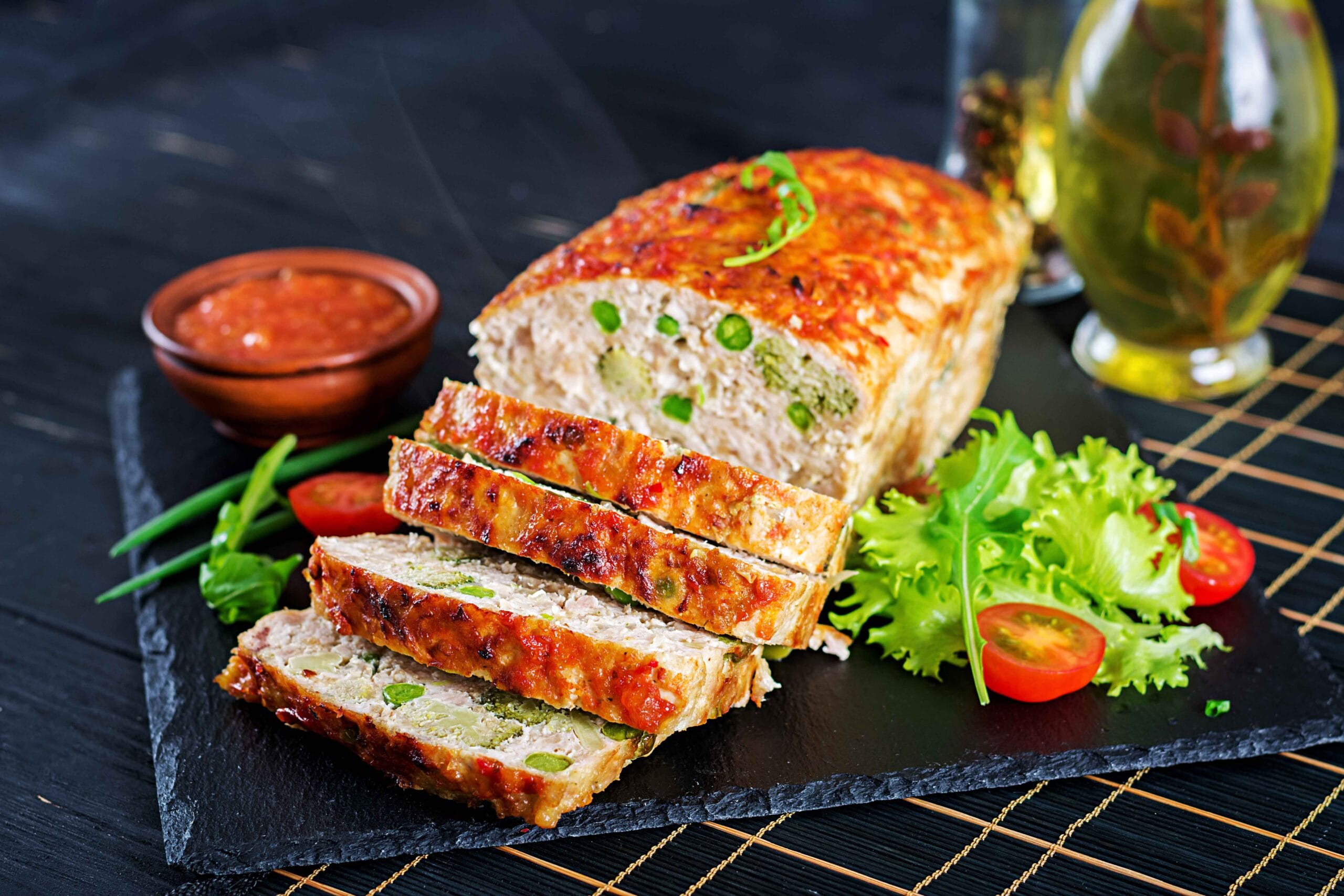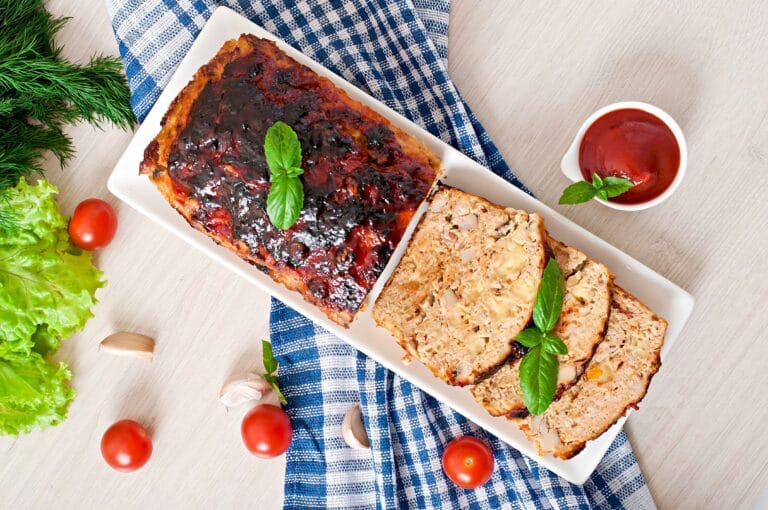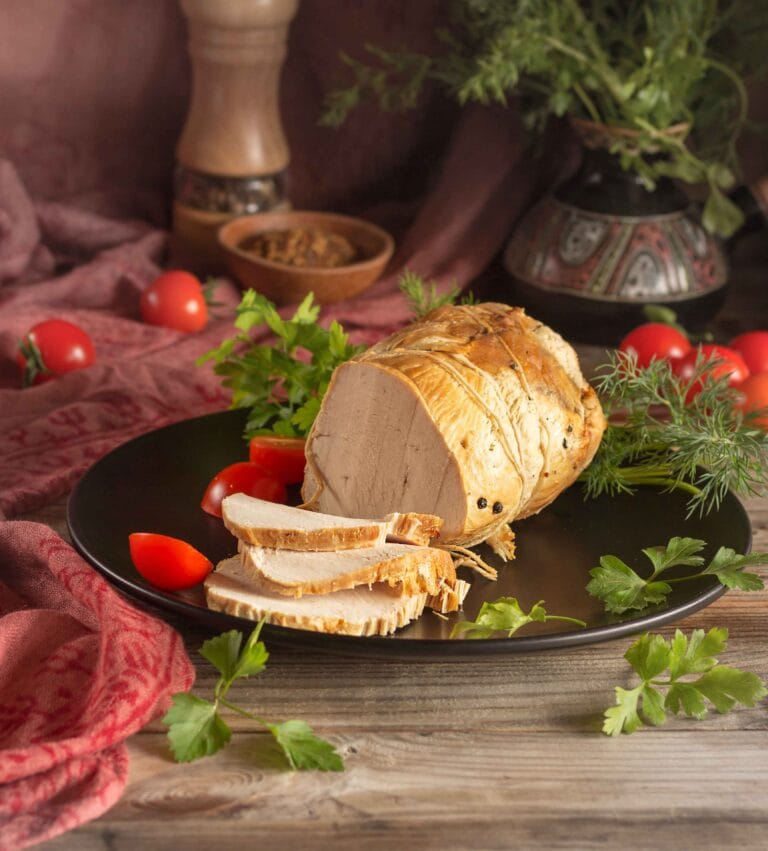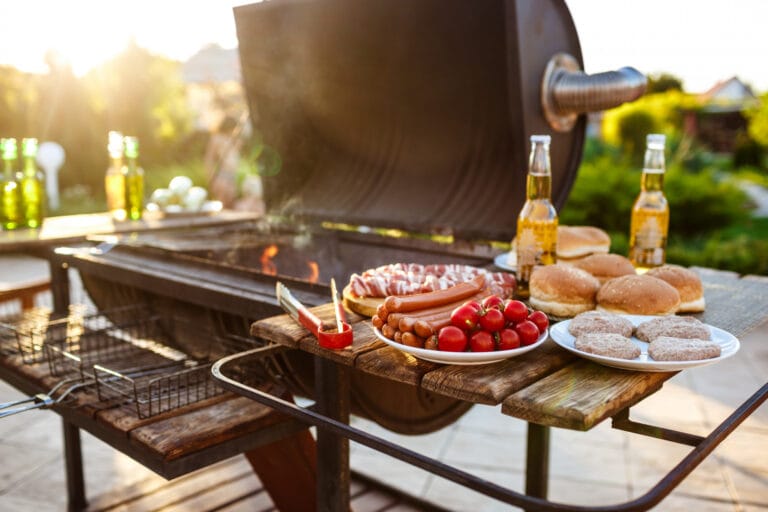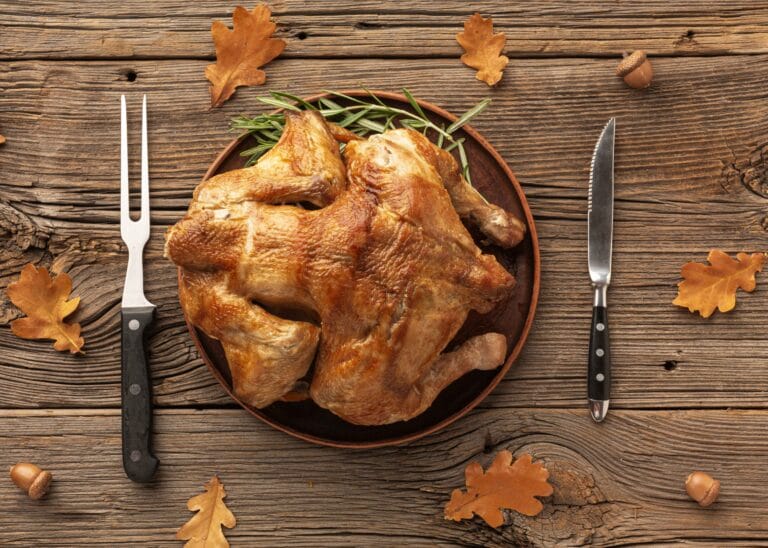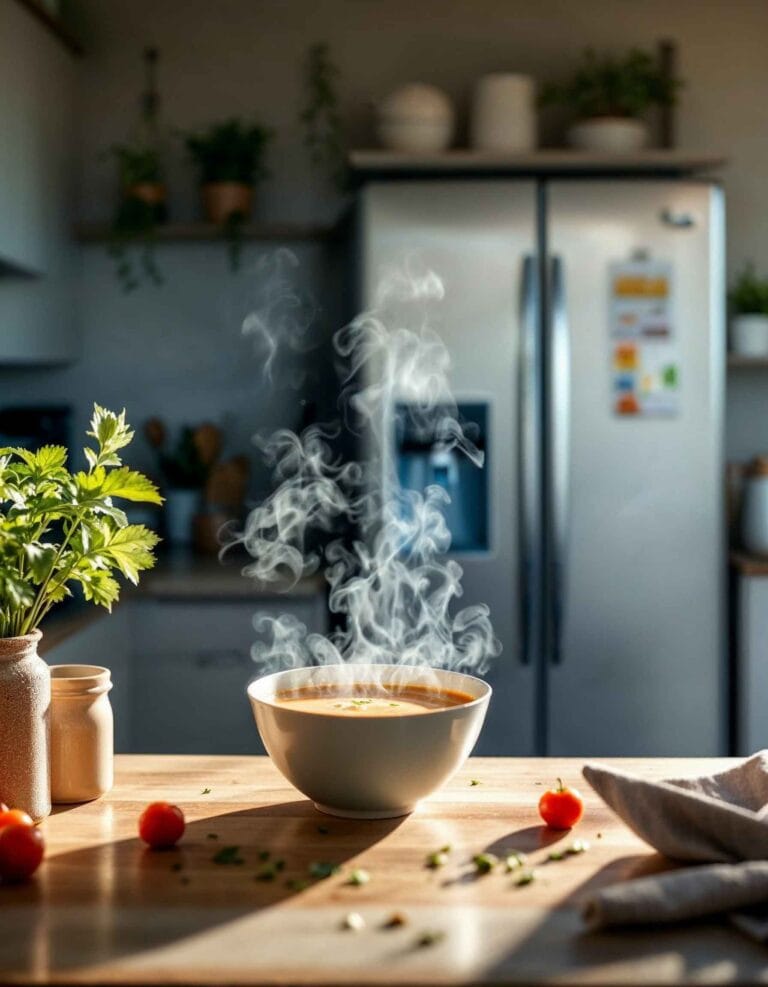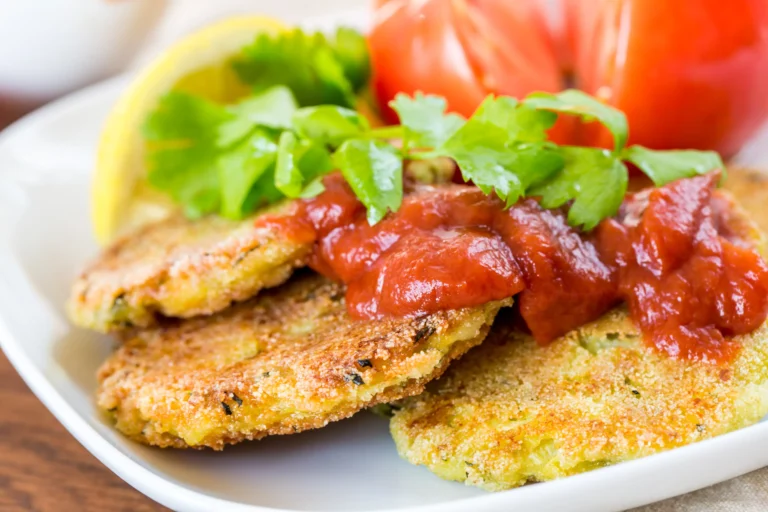Meatloaf Cooking Guide: Is 350°F or 375°F the Perfect Temperature?
One common question among home cooks is, ‘Is it better to cook meatloaf at 350 or 375?’ This guide will explore the answer in depth.
Meatloaf is a classic comfort food that can be tailored to personal taste with endless variations of ingredients and seasonings. However, one of the most debated aspects of making the perfect meatloaf is choosing the right cooking temperature. Should you bake your meatloaf at 350°F, or is 375°F the better option?
The answer lies in the balance between cooking time, texture, and flavor. The cooking temperature can significantly impact the outcome of your meatloaf—whether it’s tender and juicy or crisp and caramelized. In this article, we’ll explore the differences between cooking meatloaf at these temperatures and guide you on how to achieve the best results for your recipe.
Learn how to make a classic Lipton Onion Soup Meatloaf for timeless comfort food delight.
The Science of Meatloaf Cooking
Cooking meatloaf successfully requires understanding the role of temperature and timing. The key to a perfect meatloaf lies in achieving the right balance between a thoroughly cooked interior and a flavorful, well-textured exterior. Let’s dive into the science behind it.
The Role of Cooking Temperature
The cooking temperature of your meatloaf directly affects its texture, flavor, and moisture content. Lower temperatures, like 350°F, allow the meatloaf to cook more evenly, ensuring that the center is tender and juicy. Higher temperatures, such as 375°F, expedite the cooking process, creating a more pronounced crust on the exterior.
The ultimate goal is to achieve a safe internal temperature of 160°F (for beef, pork, or a mixture) or 165°F (for poultry). This ensures the meat is fully cooked without over-drying.
Discover the secret to juicy meatloaf with expert tips and techniques.
Why Internal Temperature Matters More
A meat thermometer is your best friend when cooking meatloaf. No matter the oven temperature, ensuring the meatloaf reaches the right internal temperature is critical. Here’s why:
- Safety: Undercooked meat can harbor bacteria, posing health risks.
- Texture: Overcooked meatloaf can become dry and crumbly. Using a thermometer helps you strike the perfect balance.
Insert the thermometer into the thickest part of the loaf, avoiding contact with the baking pan, to get an accurate reading.
Balancing Cooking Time and Temperature
Temperature directly correlates with cooking time. At 350°F, a standard 2-pound meatloaf will take about 1 hour to 1 hour and 15 minutes. At 375°F, the same meatloaf will bake in approximately 50 to 60 minutes. While a faster cook time is tempting, rushing the process might sacrifice moisture and tenderness, particularly in larger meatloaves.
The Maillard Reaction
The Maillard reaction is a chemical process that occurs when proteins and sugars in the meatloaf crust react to heat, creating that delicious browned exterior. Cooking at 375°F enhances this process, yielding a more caramelized, crispier crust. Conversely, 350°F produces a subtler browning effect, which can be ideal if you prefer a softer crust.
The Role of Resting Time
After removing the meatloaf from the oven, let it rest for 10-15 minutes. Resting allows juices to redistribute throughout the loaf, preventing them from spilling out when sliced. Regardless of the cooking temperature, this step ensures a moist, cohesive meatloaf.
Cooking Meatloaf at 350°F
Cooking meatloaf at 350°F is a tried-and-true method that offers consistency and predictability. It’s a go-to choice for many home cooks who value a moist and tender meatloaf over a faster cook time or a pronounced crust.
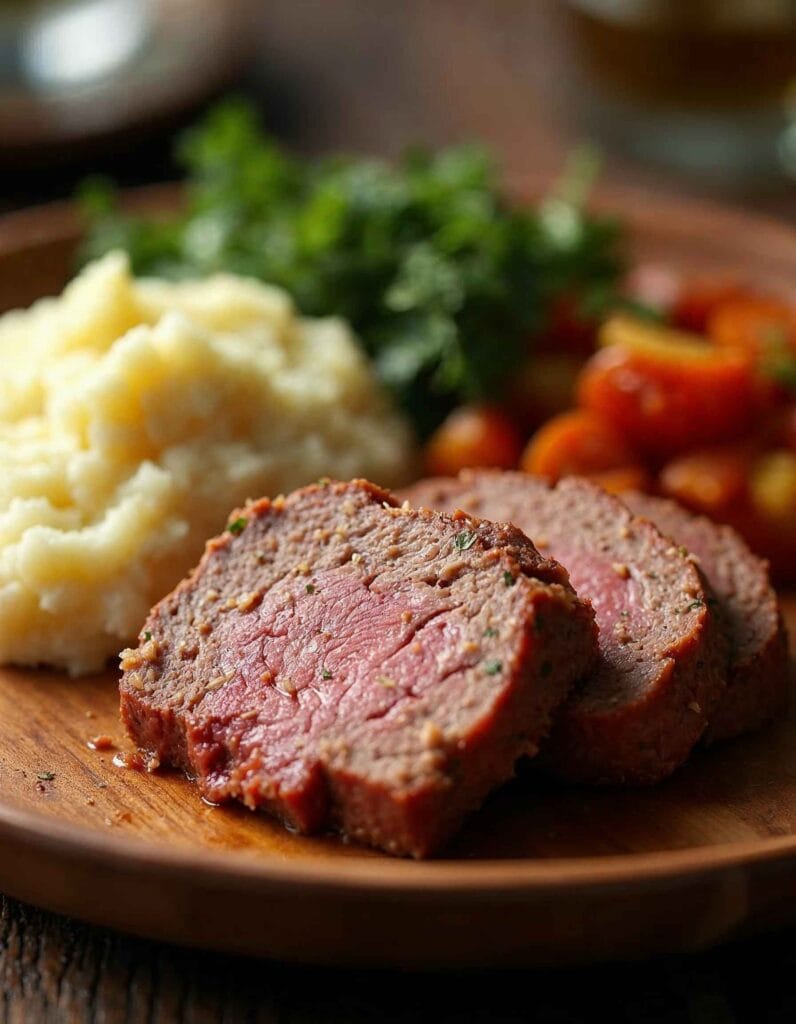
Pros of Cooking at 350°F
- Even Cooking
Baking meatloaf at 350°F ensures that the loaf cooks evenly from the outer edges to the center. This slower cooking process reduces the risk of undercooking the middle or overcooking the exterior. - Juicier Texture
At 350°F, the gradual cooking process helps retain moisture within the meat. This temperature is ideal for larger or denser meatloaves, as it allows the interior to cook fully without drying out. - Better Flavor Development
Slow cooking at this temperature gives flavors from seasonings, herbs, and other ingredients time to meld together, resulting in a well-balanced taste.
Best Practices for Cooking at 350°F
- Use a Loaf Pan or Freeform Shape
To maintain structural integrity, you can use a loaf pan for uniformity or shape the meatloaf directly on a baking sheet for a more rustic presentation. Lining the pan with parchment paper can help prevent sticking. - Timing Guidelines
For a standard 2-pound meatloaf, bake at 350°F for approximately 60 to 75 minutes. For smaller meatloaves, check for doneness at around the 45-minute mark. - Monitor the Internal Temperature
Use a meat thermometer to ensure the meatloaf reaches an internal temperature of 160°F. Check the temperature in the center of the loaf for accuracy.
Perfect Pairings for 350°F Meatloaf
- Mashed Potatoes: The creamy texture complements the soft, tender meatloaf.
- Roasted Vegetables: Slow roasting at the same temperature makes meal prep easier.
- Gravy or Glaze: Serve with a rich gravy or extra glaze on the side for added flavor.
Cooking at 350°F is ideal if you prefer a juicier, more tender meatloaf.
Cooking Meatloaf at 375°F
Baking meatloaf at 375°F offers a quicker cooking process and a more caramelized crust, making it an appealing choice for those who enjoy a bolder texture and flavor. This temperature is particularly suitable for smaller or leaner meatloaves that can withstand slightly higher heat without drying out.
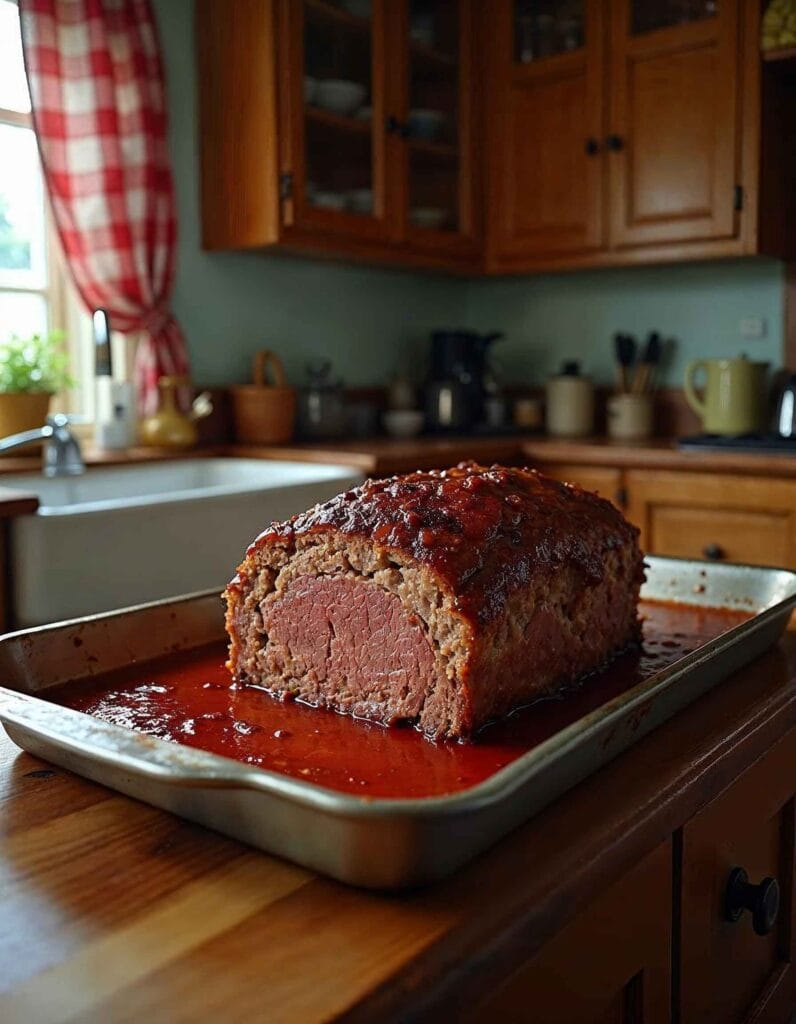
Pros of Cooking at 375°F
- Faster Cooking Time
Cooking at 375°F reduces the overall baking time, making it a practical option when you’re short on time. For a 2-pound meatloaf, you can expect it to be done in about 50 to 60 minutes. - Enhanced Browning
The higher temperature accelerates the Maillard reaction, resulting in a beautifully browned and flavorful crust. This adds a satisfying texture contrast to the tender interior. - Ideal for Smaller Meatloaves
If you’re cooking a smaller portion (e.g., 1 pound or mini meatloaves), 375°F helps ensure they cook through quickly without losing their shape.
Best Practices for Cooking at 375°F
- Shape the Meatloaf Properly
A slightly flatter loaf allows for even cooking at this higher temperature. Ensure that the loaf isn’t too thick to avoid undercooking the center. - Apply a Glaze Strategically
Add your glaze in the last 15 minutes of cooking to prevent it from burning. A ketchup-based glaze or a tangy barbecue sauce works well at 375°F. - Monitor Closely Near the End
As the cook time is shorter, check the internal temperature with a meat thermometer at the 45-minute mark to avoid overcooking. The target internal temperature is still 160°F for beef and pork or 165°F for poultry-based meatloaf.
Perfect Pairings for 375°F Meatloaf
- Crispy Potatoes: Roast potatoes alongside the meatloaf for a complementary texture.
- Steamed Greens: Add balance to the meal with spinach, broccoli, or green beans.
- Sweet and Tangy Glazes: Experiment with honey-barbecue or balsamic-based glazes for an extra layer of flavor.
When to Choose 375°F
- Smaller Loaves: Quick cooking for 1-pound loaves or mini loaf portions.
- Crispy Exterior Lovers: If you enjoy a more defined crust.
- Time Constraints: When you need dinner on the table in under an hour.
Cooking at 375°F brings bold flavors and a delicious crust to the table.
Key Factors to Consider
When deciding whether to cook meatloaf at 350°F or 375°F, several factors come into play. These include the size of your meatloaf, the type of meat you’re using, the texture you desire, and the time you have available. Understanding these elements can help you make an informed choice for a successful meal.
Size of the Meatloaf
- Large Meatloaves
For larger meatloaves (2 pounds or more), a lower temperature like 350°F is generally better. The slower cooking process ensures that the interior cooks evenly without overcooking the outer crust. - Small Meatloaves
If you’re making a smaller or individual-sized meatloaf, 375°F is a suitable option. The higher heat allows these portions to cook quickly while still achieving a nicely browned exterior.
Type of Meat Used
- Lean Meats (Turkey or Chicken)
Lean meats are more prone to drying out. A lower temperature like 350°F helps retain moisture and prevents them from becoming tough. Incorporating ingredients like grated vegetables or a glaze can also help combat dryness. - Fattier Meats (Beef or Pork)
Beef and pork have higher fat content, making them more forgiving at 375°F. The fat renders as it cooks, keeping the meatloaf moist even at a higher temperature.
Desired Texture and Crust
- Soft and Tender Interior
If you prioritize a tender, melt-in-your-mouth texture, 350°F is the better choice. The slower cooking process enhances moisture retention and creates a softer crust. - Crispier Exterior
For a meatloaf with a distinct crust, 375°F is ideal. The higher heat promotes browning and caramelization, adding a flavorful and slightly crispy texture to the outer layer.
Time Availability
- More Time
If you’re not in a rush, cooking at 350°F allows for a leisurely preparation process. The longer cooking time lets you focus on side dishes or other components of the meal. - Less Time
When time is tight, 375°F provides quicker results without compromising too much on flavor or texture.
Using a Meat Thermometer
Regardless of the oven temperature, using a meat thermometer is the most reliable way to ensure your meatloaf is cooked to perfection. The internal temperature should reach:
- 160°F for beef or pork-based meatloaf.
- 165°F for poultry-based meatloaf.
Checking the temperature near the end of the cook time helps you avoid undercooking or overcooking the meatloaf.
Balancing Moisture and Flavor
- Moisture-Boosting Ingredients
Incorporate eggs, breadcrumbs, or milk into the mixture to ensure the meatloaf doesn’t dry out, especially when cooking at 375°F. - Glazing Techniques
Apply a sauce or glaze during the last 15 minutes of baking for added flavor and moisture. Consider a mix of ketchup, brown sugar, and mustard for a classic touch. - Resting Time
Always let the meatloaf rest for 10-15 minutes after removing it from the oven. This helps the juices redistribute, making the loaf easier to slice and serve.
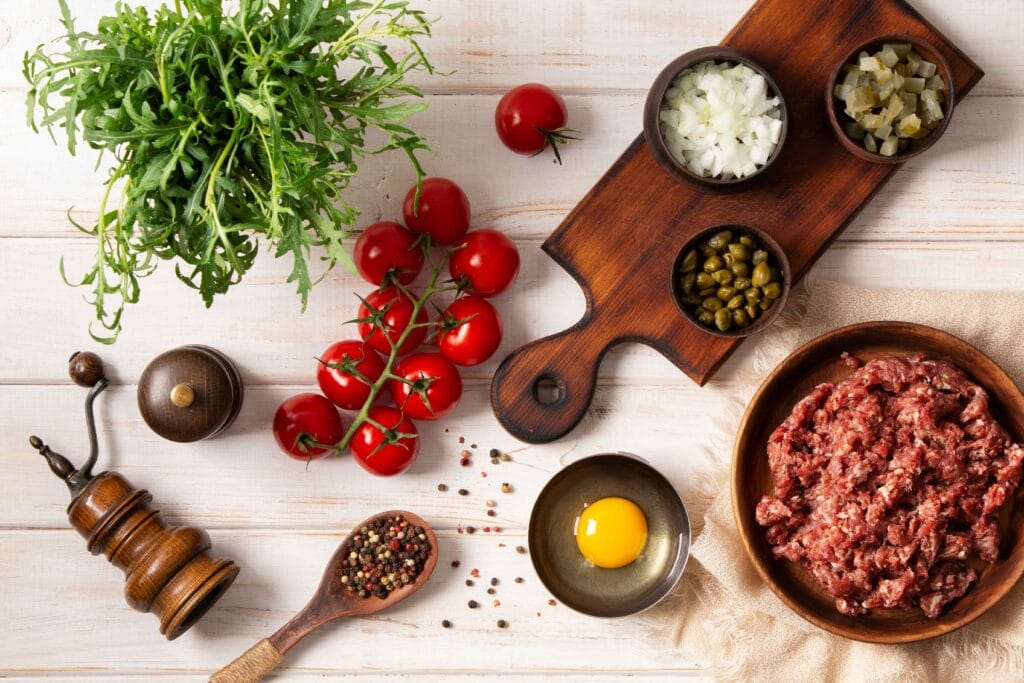
Final Temperature Adjustments
If you’re unsure which temperature to choose, you can always start at 350°F and increase to 375°F during the last 15 minutes. This approach combines the benefits of slow cooking with a crisp, caramelized finish.
FAQs About Meatloaf Cooking
How long does a 2 lb meatloaf take to cook at 375 degrees?
At 375°F, a 2-pound meatloaf typically takes 50 to 60 minutes to cook. The exact time can vary based on the shape and thickness of the meatloaf, so it’s crucial to use a meat thermometer to check for doneness. The internal temperature should reach 160°F for beef or pork-based meatloaf and 165°F for poultry-based versions.
For best results, start checking the temperature at the 45-minute mark. This prevents overcooking while ensuring the meatloaf is safe to eat.
Do you cover meatloaf when baking at 350?
Yes, it’s a good idea to cover meatloaf when baking at 350°F, especially during the initial stage of cooking. Covering with foil helps retain moisture, preventing the meatloaf from drying out.
Here’s how to do it:
- Cover the meatloaf with foil for the first 30-40 minutes of baking.
- Remove the foil for the last 15-20 minutes to allow the top to brown and the glaze (if applied) to caramelize.
This technique is particularly effective for larger meatloaves that take longer to cook.
What is the secret to a great meatloaf?
The secret to a great meatloaf lies in balancing flavor, moisture, and texture. Here are some key tips:
- Don’t Overmix the Meat
Overmixing can make the meatloaf dense and tough. Combine ingredients gently until just incorporated. - Use a Binder
Ingredients like breadcrumbs, oatmeal, or crushed crackers help bind the meat together while adding structure and moisture. - Incorporate Moisture-Rich Ingredients
Adding eggs, milk, grated onions, or finely diced vegetables ensures the meatloaf stays juicy, even when cooked at higher temperatures. - Season Generously
Use a combination of salt, pepper, garlic powder, and herbs like parsley or thyme to enhance the flavor. - Apply a Flavorful Glaze
A classic glaze of ketchup, brown sugar, and mustard can elevate the meatloaf’s flavor and add a delightful caramelized topping. - Don’t Skip the Resting Period
Let the meatloaf rest for 10-15 minutes after baking. This allows the juices to redistribute, making the meatloaf easier to slice and ensuring every bite is moist.
Find out why milk is better than water in meatloaf for enhancing flavor and texture.
Is it better to cook meatloaf at 350 or 375?
The choice between 350°F and 375°F depends on your preferences and circumstances:
- 350°F: Ideal for larger meatloaves or when you want a tender, moist texture with a subtle crust. The longer cooking time allows flavors to meld.
- 375°F: Great for smaller meatloaves or if you prefer a more caramelized crust. The shorter cooking time is convenient when you’re in a hurry.
Regardless of the temperature, using a meat thermometer to achieve the correct internal temperature is essential for the best results.
Conclusion
The choice between cooking meatloaf at 350°F or 375°F ultimately depends on your priorities in terms of texture, time, and size. If you’re looking for a tender, juicy meatloaf with evenly cooked flavors, 350°F is your best bet. This lower temperature is ideal for larger meatloaves or when you have the time to let the flavors develop slowly.
On the other hand, 375°F is perfect for those who enjoy a crispier crust and need a quicker cooking process. This higher temperature works well for smaller loaves or when you’re pressed for time, ensuring a flavorful, caramelized exterior without compromising on the interior doneness.
Regardless of the temperature you choose, remember to:
- Use a meat thermometer to check for an internal temperature of 160°F for beef or pork or 165°F for poultry.
- Add moisture-rich ingredients like eggs, breadcrumbs, and milk to prevent dryness.
- Let the meatloaf rest after baking to lock in juices and improve sliceability.
Whether you prefer the slow and steady approach of 350°F or the faster results of 375°F, both methods can produce a delicious, hearty meatloaf. Experiment with these techniques to find the perfect balance that suits your taste buds and cooking style.
In summary, the answer to ‘Is it better to cook meatloaf at 350 or 375?’ depends on your desired results.

